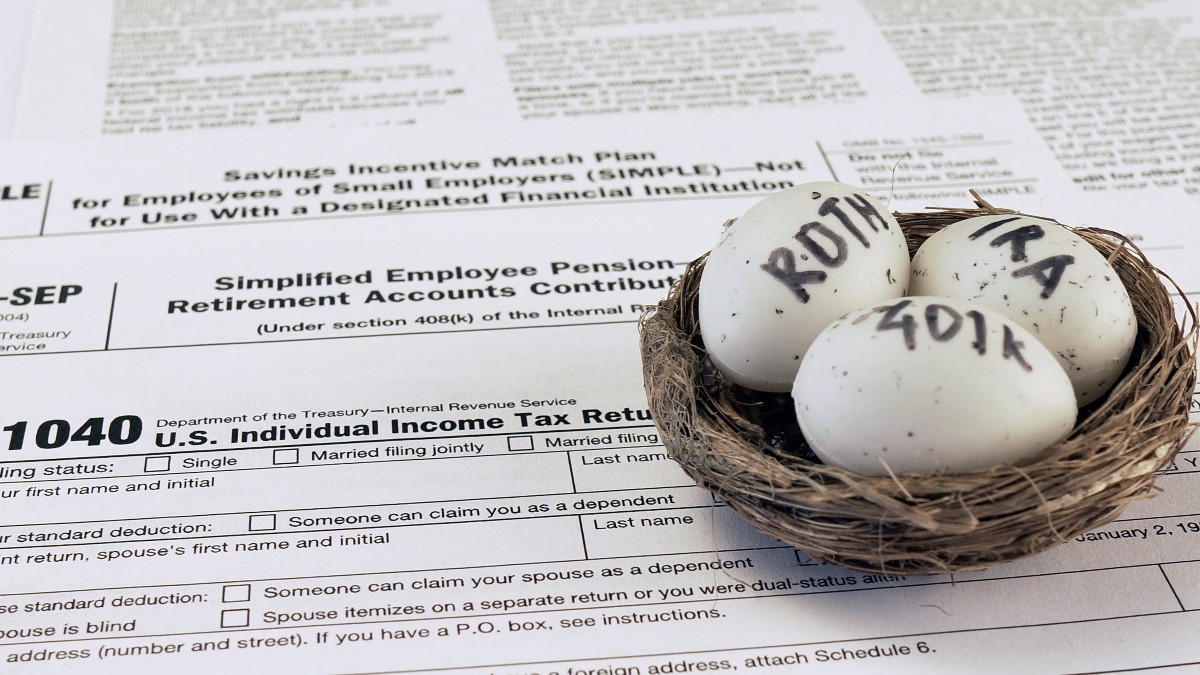If you’re like many investors, you may already feel bullish about your 2022 finances. In fact, 72% of Americans think they’ll be better off this year than last. With the optimism of a new year, it’s the perfect time to take a fresh look at your financial goals and make decisions that will help you determine if you’re meeting your overarching objectives.
Regular review is at the center of Stableford’s investment philosophy and is essential to financial planning. In order to help you keep your financial health in check and help you manage your legacy, we’ve outlined a financial to do list for the entire year, broken down by simple tasks each quarter.
Determining Your Financial Health
 The first step in taking charge of your finances is to take a hard look at them; where you are, how you’re doing, and your overall monetary state. This is your financial health.
The first step in taking charge of your finances is to take a hard look at them; where you are, how you’re doing, and your overall monetary state. This is your financial health.
Strong financial health features a steady flow of both income and expenses, a robust portfolio, and a growing cash balance. No sudden spikes up or down. Weak financial health shows quite the opposite or is missing some of these features.
To determine your financial health, start with your investments. If you are still working and laser-focused in accumulation mode, calculate how much of your income you managed to invest in 2021. The average investor should aim for saving at least 15%, however, if you are a high net worth individual or playing catch up with retirement planning, you should strive to save much more.
Liquid Assets
Investment and retirement accounts are important but don’t neglect your savings account, either. Most households should have three to sixth months of living expenses set aside for any unexpected expenses – more for those with high or volatile incomes.
Having a nest egg proved to be a tremendous help for many in the last few years when we saw unprecedented job insecurity and economic shifts. And even now, half of the American adults say they would struggle with a $400 emergency expense.
It’s also important to review your portfolio, especially since high returns in the last few years could put you in a higher volatility position than you are comfortable with.
Smart Management
How are you deploying your money? Consider total opportunity sets: investments and debt diminishment. Your money should go to where it has the highest return on investment. For example, investments could outearn the low-interest rates of a mortgage, but not likely the high-interest rates of a credit card.
Capital allocation is very individualized and dependent on a number of factors, including your life stage, interest rates on your debts vs. your expected return on investments, risk tolerance, and any tax breaks you’re working with. These factors should be reviewed with your financial advisors periodically or as life changes happen.
Tax tip: Gather all your documentation as soon as it’s available, particularly 1099s and W-2s that show income and gains. These can shed a lot of light on your earnings and investment habits, helping you restructure going forward. You’ll also eliminate any tax time scrambling.
What to Do in Q1: Adjusting for 2022
 If your financial health is not where you want it to be, examine your expenses for unnecessary and costly spending. This could be a simple spreadsheet or a handy app. Either way, the goal is to record purchases and look for patterns that are diverting you from your goals.
If your financial health is not where you want it to be, examine your expenses for unnecessary and costly spending. This could be a simple spreadsheet or a handy app. Either way, the goal is to record purchases and look for patterns that are diverting you from your goals.
Contributions
After you’ve reviewed your assets, allocation, and expenses, the first and easiest adjustment to make is your retirement plan contributions.
Contribution limits for 401(k) and IRA accounts continue to increase annually, albeit in minute amounts, so make sure you adjust any automatic contributions accordingly to take full advantage.
Did you fall short of the IRA or health savings account (HSA) limits for 2021? You can still contribute for the 2021 tax year until the tax deadline, April 18.
2022 Contribution Limits:
- 401(k) for investors under 50: $20,500
- 401(k) for 50+: $27,000
- IRAs for investors under 50: $6,000
- IRAs for 50+: $7,000
- HSA for self-only coverage: $3,650
- HSA for family coverage: $7,300
Reminder: Jan. 18 is your deadline for paying your estimated taxes for the fourth quarter of 2021 if you are self-employed or retired and don’t have taxes withheld from your IRA withdrawals.
What to Do in Q2: Get Organized
With taxes top of mind, it’s also a good time to get your paperwork organized, both physically and digitally. Before you start your shred-a-thon, make sure you or your financial provider has documentation. Then free yourself of old bank statements, prospectuses, receipts, and utility bills.
To save yourself this headache in the future, and to avoid exposure to financial fraud via mail, go paperless and make sure all your statements are now coming to you digitally. You’ll also want to make sure your home network and computers are secure to receive this data.
Centralize Your Information
While working with your accounts, organize them. Create a master directory that contains key financial account information:
- Provider name
- Account number
- URL
- Contacts
This can be handwritten or a digital file like a spreadsheet, however, any digital file will need to be encrypted to protect your data.
For any hard-to-replace physical documents, such as birth and marriage certificates and passports, place them in a fireproof or safe deposit box.
Reminder: Investors who are paying quarterly estimated tax payments will need to have them in by June 15.
What to Do in Q3: Audit and Outline
 Now that your taxes (or an extension) are filed, how tax-efficient is your portfolio?
Now that your taxes (or an extension) are filed, how tax-efficient is your portfolio?
Using your 2021 return as a guide, work with your financial advisor to determine if you’re taking full advantage of tax-sheltered vehicles, such as 401(k)s, IRAs, HSAs.
Is a traditional or Roth IRA more beneficial? Any significant capital gains distributions should trigger a red flag to make more tax-efficient adjustments, such as using municipal bonds for shorter-term cash needs or using index funds and EFTs for equity exposure.
Tax Efficiencies & Goals
Since you’re already reviewing your portfolio for tax efficiencies, it’s a good time to look at the larger picture. If your portfolio has experienced volatility, or your personal situation has changed, it’s a great time to review your assets allocation goals you set back in Q1. As the year is more than halfway through, it’s also time to assess your savings and spending rates.
Evaluating your portfolio and creating or updating your investment policy statement (IPS) go hand in hand nicely. This serves as a blueprint to your portfolio and outlines what your investing end game is.
It should include financial goals, expected timeline, any criteria for selecting investments, asset-allocation policy, and how often you plan to monitor it all.
Reminder: Investors who are paying quarterly estimated tax payments will need to have them in by Sept. 15.
What to Do in Q4: Estate and Long-term Planning
 Do a quick review of your estate plan to make sure all families are accounted for and any updates are made. Then make sure the beneficiaries outlined in your estate plan match those noted on your 401(k), IRA, and any other accounts.
Do a quick review of your estate plan to make sure all families are accounted for and any updates are made. Then make sure the beneficiaries outlined in your estate plan match those noted on your 401(k), IRA, and any other accounts.
The designations that you make with these accounts supersede those in a will or trust, so it’s critical that they align. Double-check the beneficiaries on your insurance policies, as well.
Long Term Care
Another part of your estate plan to consider, or to create separately, is a long-term care plan. How do you want to spend your later years, and who will care for you? If you haven’t already, now is the time to make and start funding those decisions. Doing so while you’re clear-headed and having the discussion with family members helps put everyone at ease when the time comes to carry out the plan.
October holds an important date to mark on your calendar. If you received an extension on your 2020 tax return, you must have the return completed and postmarked by Oct. 17, 2022.
In November, fund companies typically publish estimates of what they expect from the December distributions. That can be a trigger to start your year-end portfolio review. It’s helpful to list out your overall asset allocation, then track the weightage of each asset and overall returns on your portfolio. You’ll be primed to reassess distributions against any changes in your risk tolerance.
December is the season of giving and it’s the perfect time to share your good fortune. By 2022, each individual can gift up to $16,000 per person per year without having to file a gift-tax return. Feeling charitable? Year-end is the perfect time to make charitable contributions that can also lower your tax bill. Because of the higher standard deductions that started in 2018, taxpayers may find it helpful to bunch their itemized deductions into a single year while claiming the standard deduction the next.
If you’re 72 or older, your last to-do of the year is to take your required minimum distributions. Don’t need it now? You can gift up to $16,000 per person per year without a gift-tax return, or you can contribute to a charity directly from your IRA via a qualified charitable distribution.
Retired Now? 4-Step Financial to Do List
 First, review your 2021 spending rate. There are multiple online calculators that can assess your spending and strategy saving for you.
First, review your 2021 spending rate. There are multiple online calculators that can assess your spending and strategy saving for you.
- If you are drawing cash from your portfolio for living expenses, review your inflation protection. Start by assessing how rising prices may be affecting your spending, then how – or if – you are protecting your purchasing power.
- Assess your liquid assets. You want cash in hand for an emergency, in case one of your income sources is disrupted, or if you need to ride out some volatility in a long-term portfolio. An extra cash cushion protects you from needing immediate access to investment assets.
- Create a retirement policy statement that outlines your spending strategies, specifically:
- How much do you need?
- How much is covered by a pension or Social Security?
- Portfolio spending rate and potential changes to it.
- If you are focused on an income-centric, total-return, or blended approach.
- As the year-end approaches, don’t neglect to take your required minimum distributions from 401(k)s and IRAs by December 31. If you don’t need the money to live on, gift a charity and add a qualified charitable distribution maneuver to your 2022 taxes.
Financial Health for Every Season
Whether you’re just starting out in your career and your investments, or you’re looking forward to retirement, financial health needs maintenance at every stage. Following a quarterly financial to do list makes the maintenance easier while celebrating major milestones of the year.
For high-net-worth investors, creating a family office can bring together the resources and financial services needed for every season. Stableford approaches wealth management with a focus on risk-adjusted returns to help provide peace of mind while supporting the transfer of wealth across generations.
To evaluate your portfolio, tax efficiencies, estate, or retirement plan, schedule a complimentary 15-minute consultation with Stableford Capital or call 480.492.2300.
